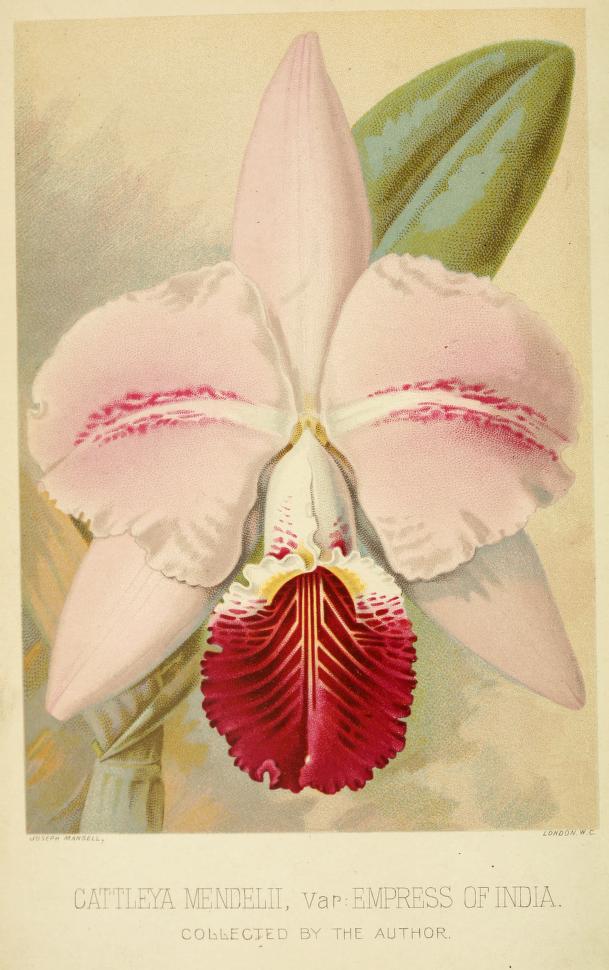
Albert Milican was an orchid hunter from England during the late 1800s. While a modern florist might wear an apron and sell bouquets, Millican describes himself as an adventurer, needing an entire arsenal of knives, cutlasses, revolvers, and rifles to brave his quest to Colombia.1 Albert Millican is a tourist visiting Latin America and as such his point of view is that of a white, male, European. He is also a salesperson. By writing about his journey, he is not just selling the orchids, but also the story of all he had to go through to get them. Using hyperbole and creating fantastical stories of fights with wild Indians and Jaguar hunts makes the worth of the flowers increase at a time when orchids were already selling for copious amounts. The reason for Albert Millican’s orchid hunting was because it was the era of orchidelirium. Orchidelirium was a period in history when Victorian elites were paying excessive amounts of money for orchids from across the Atlantic.2 To increase the worth of an already expensive and high demand item, Millican does not hold back as he tells a n adventurous narrative of travelling with natives throughout the rural settings as well as the cities of Colombia. The stories were gathered over four years during which time Millican made five journeys to the orchid districts of South America.3
During his retelling of his time in Colombia, Millican spends little of it on the flowers themselves, and instead focuses his book on the people he met along the way. His description of Latin America is that it is less civilized than Europe, specifically England. Millican describes the civility of natives being parallel to how much interaction the people have had with Europeans. In Chapter 5 Millican describes the natives he came across while travelling along the Magdelena River. He describes them as quite simple-minded and not caring about highbrow topics fashion or industry. He even goes as far as to say that their habits are the same as when Christopher Colombus first interacted with them. Yet, in the same paragraph he goes on to say that they possess “considerable civilisation, from constant intercourse with Europeans.”4 This interpretation reflects his point of view through making the country seem uncivilized and in need of European help. It paints him as a brave rescuer. As someone who is noble and just in their cause, not as a greedy salesperson looking for profit. While his descriptions might not be the most reliable, his writings do shed light on the hierarchies of power present within Colombia and the rest of the world during the 19th century. The ravaging of Colombia’s ecosystem in search of orchids by Europeans shows a continuation of economic inequalities continued from colonial times. It also shows the focus on export goods being the backbone of the Colombian economy. By painting the locals as stupid and in need of direction from Europeans it justifies the actions of Millican and others who were exploiting raw materials.
This economic hierarchy makes sense when put into the context of the increasing use of modern technologies. The British started to invest in steamboats and railways within Colombia in the late 19th century to export goods like coffee and orchids to Europe while also importing British goods to Colombia.5 By controlling the transportation of goods, Britain held control over much of the Colombian economy. This reinforced a power dynamic already at play which is seen through the way Albert Millican writes about the native Colombians he encounters on his journeys. While the bias of the author distorts the information’s accuracy, it also reveals foreign perceptions of Latin America in the 19th century. Millican paints a picture of a mysterious land with dangers all around. He feeds into the foreign perception about native peoples in Latin America by depicting them as uncivilized and emphasizes this by describing their civility on a spectrum based on how much interaction they have had with Europeans.
Work Cited
2 Mackenzie, Simon, and Donna Yates. “Collectors on illicit collecting: Higher loyalties and other techniques of neutralization in the unlawful collecting of rare and precious orchids and antiquities.” Theoretical Criminology 20, no. 3 (2016): 340-357.
1,3,4 Millican, Albert. Travels and adventures of an orchid hunter: an account of canoe and camp life in Colombia, while collecting orchids in the northern Andes. Cassell, limited, 1891.
5 Stone, Irving. “British direct and portfolio investment in Latin America before 1914.” The Journal of Economic History 37, no. 3 (1977): 690-722.
